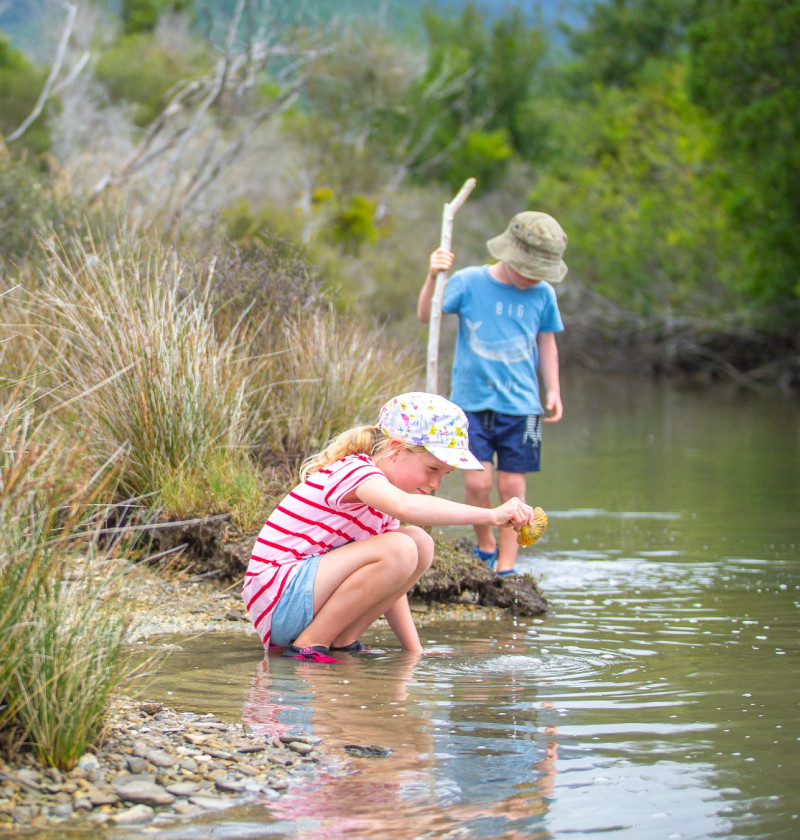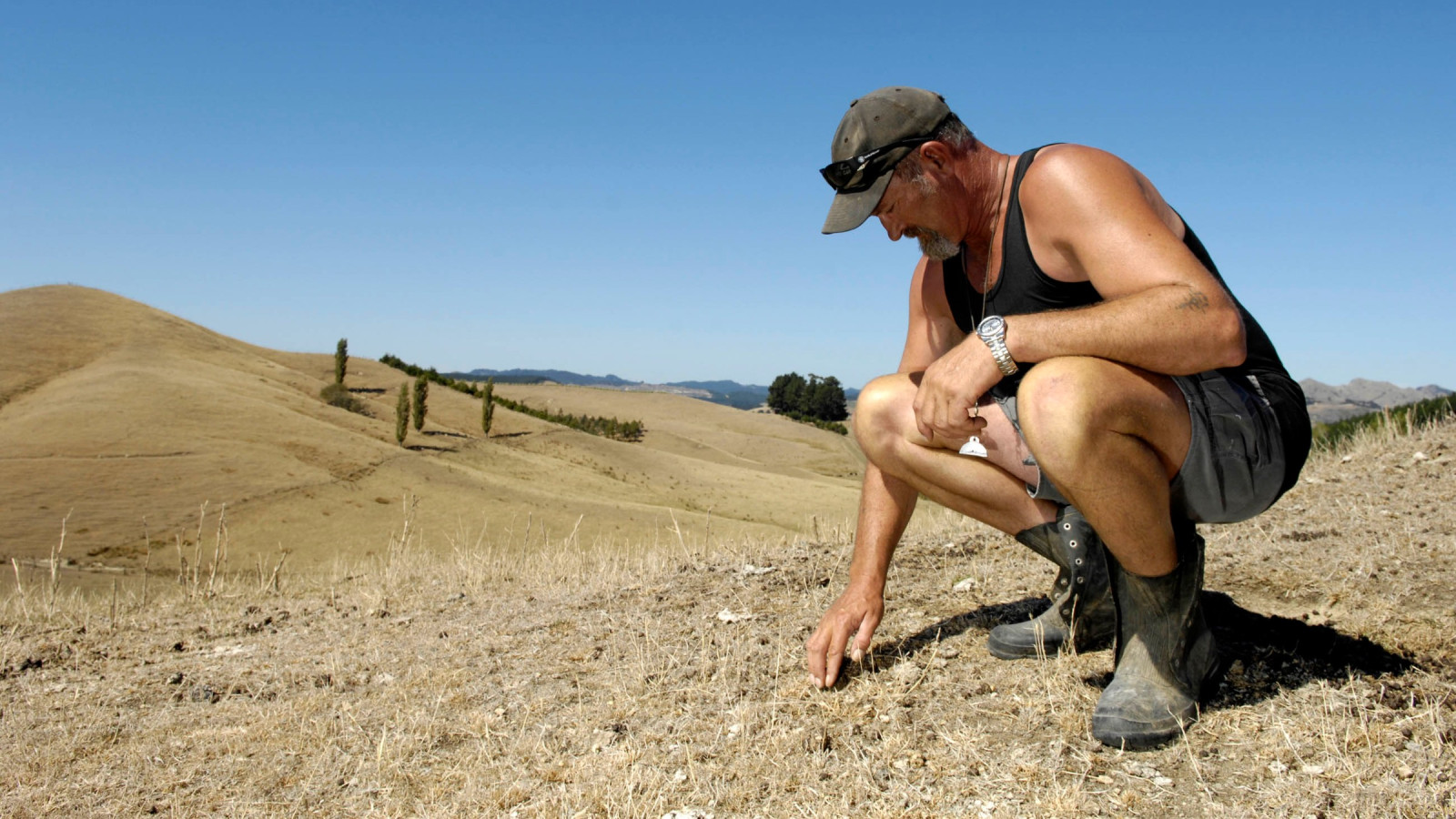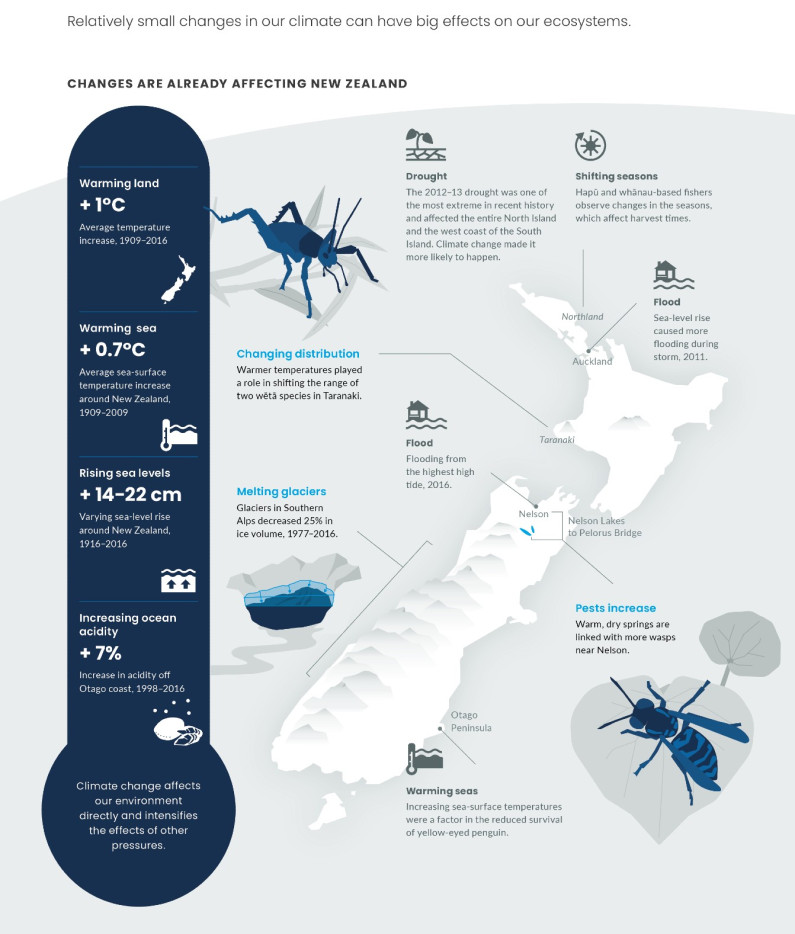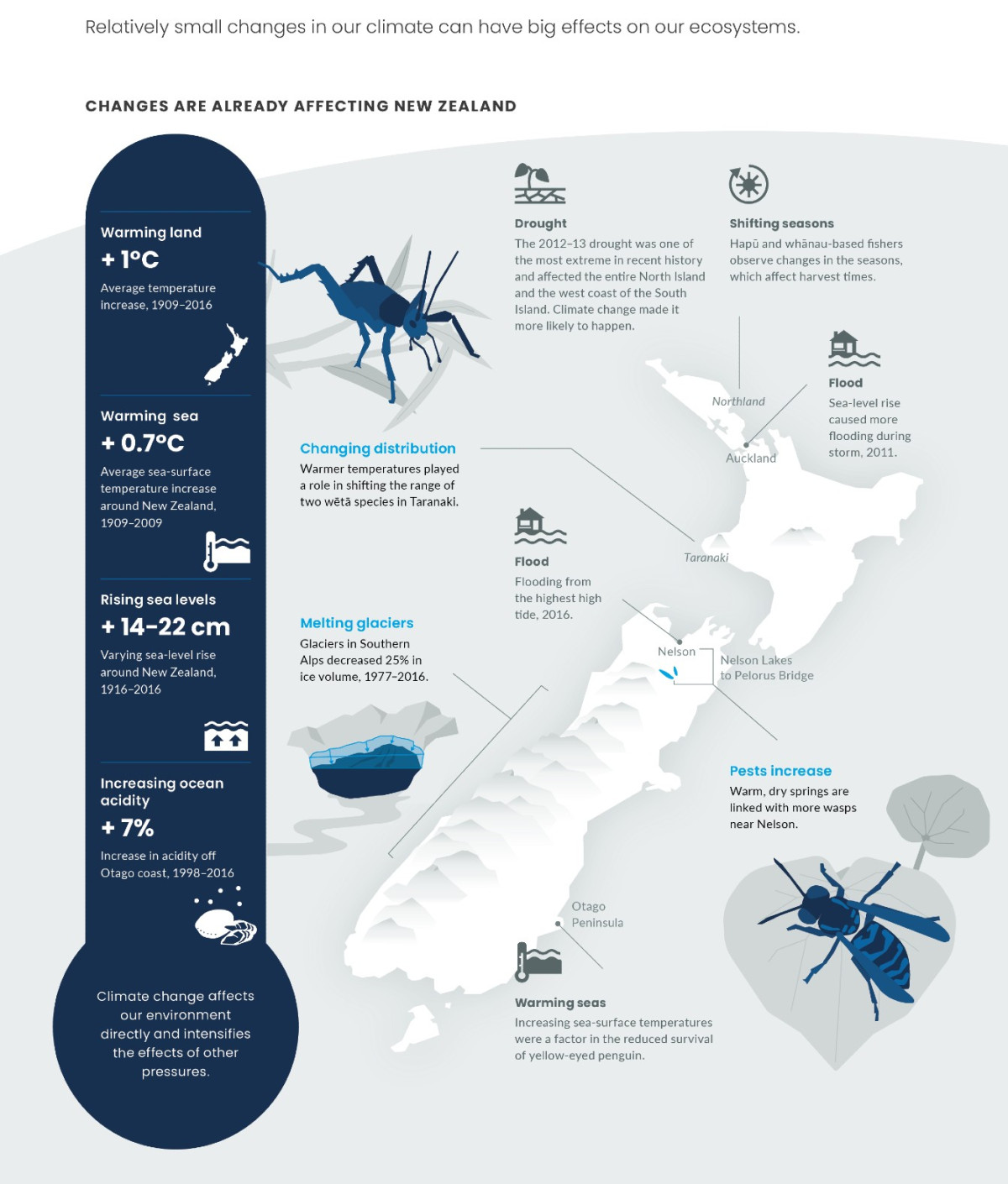Theme 5: Our changing climate

Greenhouse gas emissions are causing significant changes to Earth’s oceans, atmosphere, and climate. We expect these changes to be very long-lasting – some will be irreversible.

We are already seeing changes in our climate and marine environment, and these are expected to become more severe. These changes reach across the length and breadth of Aotearoa New Zealand, with some regional differences. As an island nation with a large marine zone, long coastline, and an economy based mainly on primary production and international tourism, we are vulnerable to the impacts of climate change.
This theme looks at two climate change issues:
Our per-person rate of greenhouse gas emissions is one of the highest for an industrialised country. Most of our emissions in 2016 came from livestock and road transport.
Global greenhouse gas emissions have increased dramatically and are at a record high. As a consequence, global temperatures have already increased by about 1 degree Celsius above pre-industrial levels. Such rates of change far exceed any past natural rates of change.
New Zealand makes a small contribution to global emissions, but we have high emissions per person when compared internationally. In 2015, New Zealand emitted 17.5 tonnes of carbon dioxide equivalent greenhouse gases per person, which was higher than all but five of the 43 Annex I (industrialised) countries. Agriculture is responsible for nearly half of our gross greenhouse gas emissions, which reflects agriculture’s economic importance, followed by road transport, which enables movement of goods and services on our roads.
Although our global contribution is small (0.17 percent of gross global greenhouse gas emissions in 2013), the contribution of small nations like New Zealand is important. Our gross greenhouse gas emissions have increased by 20 percent since 1990, but have been relatively steady in the past decade, despite increases in population and GDP. This means our emissions per person are lower now than 10 years ago. Similarly, our emissions per unit of gross domestic product since 1990 are 43 percent lower, but still high internationally – the fourth highest in the OECD in 2016.
Our larger cities tend to have high levels of black carbon (also known as soot), one of the most important contributors to global warming.
According to the International Panel on Climate Change, our emissions are reversible if we make that choice as a society. Even small reductions in greenhouse gas concentrations will reduce the changes that our grandchildren and their descendants will experience.
Our high emissions per person are partly due to the large proportion of methane and nitrous oxide from agriculture. These gases warm our atmosphere more strongly than carbon dioxide (CO2), and increase our per-person CO2- equivalent greenhouse gas emissions.
Road vehicles are our main source of CO2 emissions. Road vehicles are our main source of CO2 emissions. We have the highest rate of car ownership in the OECD, which, combined with relatively high CO2 emissions per kilometre of newly registered vehicles, means that New Zealand is among the highest OECD countries for emissions of CO2 per capita from on-road transport. This raises per-person emissions because older cars tend to use more fuel for each kilometre travelled and emit more black carbon.
The rate of warming is unprecedented, and may be faster than some organisms and ecosystems can adapt to. The impacts of these changes are already being felt globally, for example ice sheets and Arctic sea ice are shrinking. Climate change is already affecting Aotearoa New Zealand (see Issue 9).
The issues described in the report are made worse in some way by climate change. Climate change will add another layer of stress on our ecosystems, making it harder for them to recover from other impacts like pollution or seabed trawling. In turn, this will decrease the benefits we get from nature and undermine our connection to the natural environment.
Our high rate of per-person emissions compared with other industrialised countries also carries a reputational risk because international trade and tourism are strongly linked to our environmental credentials.
Changes to our climate are already being felt in our land, freshwater, and marine environments. We can expect further wide-ranging consequences for our culture, economy, infrastructure, coasts, and native species.
New Zealand is already being affected by climate change and many significant changes in our climate are being seen across the country.
These include higher land and sea temperatures, sealevel rise (14–22 centimetres in the last century), ocean acidification, more sunshine, and melting glaciers (our glaciers have lost 25 percent of their ice in the past 40 years). Some locations are experiencing drier soils, altered precipitation patterns, fewer frost days, and more warm days. Extreme wind has decreased at some locations. Most places have seen no change in extreme rainfall since 1960, but studies indicate that because of climate change, some flood and drought events were worse than they would have been or had a higher likelihood of happening.
Many of the impacts of climate change are irreversible on a human timescale, and some impacts, like erosion from extreme rainfall or species extinction, cannot be reversed at all. Stopping further emissions will not return us to a normal climate because carbon dioxide remains in the atmosphere for centuries to millennia. As long as greenhouse gas concentrations remain elevated, the risk from extreme events like heat waves, droughts, and storms will be elevated.
Carbon dioxide and other greenhouse gases are building up in the atmosphere and causing changes to the global climate.
New Zealand makes a small contribution to global emissions, but we have high emissions per person because of methane and nitrous oxide emissions from agriculture, our high rate of car ownership, and our aging vehicle fleet (see Issue 8).
The effects that are already being felt in New Zealand are expected to intensify in the coming decades. Although good information on the cumulative and cascading effects that climate change will have on our economic, social, and cultural well-being is still lacking, we can be sure that nearly all aspects of life in New Zealand will be affected.
Climate change will affect the things we value. Many culturally important sites such as early Māori and European archaeological sites, as well as marae and urupā (burial sites), are located in areas that are vulnerable to flooding or erosion. As sites are lost, so is the intergenerational connection to these places, along with the knowledge and understanding of those connections. Also, changing environmental conditions may cause some species to move to other areas, while others may be lost.
Climate change will affect where we live. Sea-level rise will put property at risk, and some places may become uninsurable. Flooding and heat waves could impact our infrastructure, including the transportation, communication, and power networks that our modern life relies on.
Climate change will affect how we live. It will affect what we grow and where, through warmer temperatures, changed precipitation patterns, more intense and frequent droughts, and intense rainfall, but also more growing days. A warming and acidifying ocean will affect the fish we catch and harvest, while more extreme fire conditions and pests could change the landscape and how we use it.


Read the long description for Impacts of climate change
Relatively small changes in our climate can have big effects on our ecosystems
Changes are already affecting New Zealand
Warming land
Warming sea
Rising sea levels
Increasing ocean acidity
Climate change affects our environment directly and intensifies the effects of other pressures.
Drought
Shifting seasons – Northland
Flood – Auckland
Changing distribution – Taranaki
Flood – Nelson
Pests increase
Melting glaciers
Warming seas

Theme 5: Our changing climate
April 2019
© Ministry for the Environment